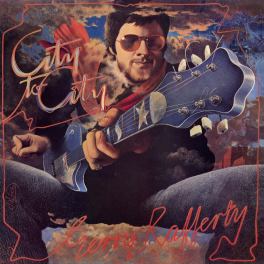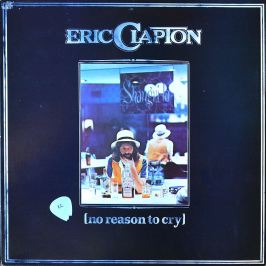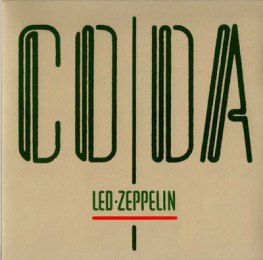Beginning in 1968, around the age of 13, I started buying albums. A lot of albums. I averaged roughly an album a week — about 50 every year — for two decades, amassing a collection of more than 1,000 LPs.
I like to think I had a pretty solid track record of buying seriously great, consistently strong albums. A precious few were truly flawless; many had mostly top-shelf stuff with two or three throwaway tracks; others were about 50-50 worthwhile/worthless. But I must concede that there were at least 100 LPs in my collection that qualify as real duds — LPs that turned out to be, at best, clear disappointments or, at worst, dismal failures.
These bombs came in a few sub-categories. Some were releases by bands with solid reputations who attempted unsuccessful experimental forays into uncharted waters (The Rolling Stones’ “Her Majesty’s Satanic Request” and Stevie Wonder’s “The Secret Life of Plants” come to mind). Or they may have been the tired “sophomore slump” second efforts by artists who had possibly shot their creative wads on their debuts but had nothing left in the tank (Harry Chapin or Pablo Cruise, anyone?). In some cases, they were “one-hit wonders” who managed to record one undeniable hit single and then rush-released an album of “product” that turned out to be nothing but inconsequential filler. Remember “Brandy (You’re a Fine Girl)”? Of course you do. What about Looking Glass? Didn’t think so.
Avid record collectors no doubt remember the feeling when they took a chance that didn’t pan out. You bought the album, raced home, tore open the shrink wrap, dropped the needle in the groove, and sat back with the album cover to peruse the lyrics as you listened. And the first song on Side 1 (remember Side 1?) was the wonderfully infectious single that drew you to the album in the first place. But then things went south quickly, sometimes in a big way. The second song…well, it sucked. It sounded nothing remotely like the opener, and/or it was a far cry from the quality you came to expect from this artist. Okay, so you skip to Song Three. Uh oh, that one sucked too…and so did the fourth, and the fifth. By the time you were 90 seconds into the other side, you removed the album in disgust and filed it away, never to be seen again. Chalk it up to a bad bet, a failed $3.99 investment.
You’d think I would’ve just thrown those clunkers out, but I held on to them, maybe just so I could make my collection seem bigger, but also because they usually did have at least the one song that made you buy it in the first place. And there’s something else: Time has a funny way of changing my perspectives, my tastes, my willingness to re-examine things. Over the years, I’ve periodically gone back, both enthusiastically and grudgingly, through the dark recesses of my album collection — yes, I still have my vinyl, even if it’s stored in another city in a friends’s basement — in search of whether there might be some salvageable recordings in there amongst the refuse. (Hell, even the aforementioned Stones and Stevie albums had one or two.) To no one’s surprise, I have discovered some pretty great little gems hidden among the yawners on Side 2 (remember Side 2?).
As a public service, I am offering here a very subjective, very small sampling of “deep tracks” — really strong songs that probably snuck by under your radar, even if you knew or owned the album. They’re my choices of great tunes from not-so-great albums that are worthy of your attention.
 “Hey Bulldog,” The Beatles, 1969
“Hey Bulldog,” The Beatles, 1969
When the Fab Four’s animated film “Yellow Submarine” was released, there was also the obligatory soundtrack album, which in this case included some of the already-released songs heard in the movie (“All You Need is Love,” etc.) as well as some seriously bogus orchestral score music from producer George Martin, which offered nothing remotely Beatles about it. But buried on this lamentable LP is a true diamond in the rough — a gritty Lennon rocker called “Hey Bulldog.” It features an edgy yet melodic 1968-era guitar lick, a compelling McCartney bass line, Lennon’s astounding vocal, and a sense of humor, with the Fabs joking and barking as the song fades out. I was delighted when Dave Grohl and Jeff Lynne chose to play a kickass rendition of this lost classic on the Beatles 50th Anniversary TV special last year.
 “Mona Lisas and Mad Hatters,” Elton John, 1972
“Mona Lisas and Mad Hatters,” Elton John, 1972
“Honky Chateau” was Elton’s transitional album — he was moving away from the gorgeously melodic, strings-laden songs of his early LPs (Your Song,” “Tiny Dancer”) and headed toward the over-the-top pop sound of “Crocodile Rock” and “Bennie and the Jets.” The album included the wonderful single “Rocket Man,” but the true sleeper here was his ode to New York City, “Mona Lisas and Mad Hatters,” a stunning piano-and-mandolin piece with rich harmonies. Happily, it was resurrected more than 25 years later on the soundtrack of Cameron Crowe’s coming-of-age rock film “Almost Famous.”
 “Waiting for the Day,” Gerry Rafferty, 1978
“Waiting for the Day,” Gerry Rafferty, 1978
I love everything about this Scotsman’s “City to City” record, especially the #1 hit single “Baker Street” with its incredible sax riff, and the follow-up single “Right Down the Line” (recently covered by the great Bonnie Raitt). But it’s the album’s closer, “Waiting For the Day,” that knocks me out every time. It comes at you like a locomotive with a galloping beat, Rafferty’s soothing yet commanding vocal, and some smokin’ lead guitar breaks in the middle and at the end.
 “Nobody But You,” James Taylor, 1972
“Nobody But You,” James Taylor, 1972
“One Man Dog,” JT’s folksy, down-home follow-up to his monumental “Sweet Baby James” and “Mud Slide Slim” albums, didn’t get anywhere near the exposure it deserved, despite the Top Ten single “Don’t Let Me Be Lonely Tonight.” There’s a very cool six-song medley that ends the album, and an almost spiritual track entitled, appropriately, “Hymn.” But the song you need to know is “Nobody But You,” a warm, wonderful slice of James doing what he does best.
 “Eminence Front” The Who, 1982
“Eminence Front” The Who, 1982
When Keith Moon passed away, The Who should’ve called it quits, as Led Zeppelin did when John Bonham died. It was the right thing to do. But they chose to soldier on, with journeyman drummer Kenney Jones taking over, and the product, both on album and in concert, was decidedly below par for this great band. Their final album, “It’s Hard” (1982), was by and large a mess, full of below-average tracks with uninspired playing from Townshend, Daltrey and Enwtistle. But the LP’s final track, “Eminence Front,” was brilliant, and it ranks right up there with anything from “Who’s Next” or “Quadrophenia.” Far from “a put-on,” as the lyrics suggest, it was the real deal.
 “Black Summer Rain,” Eric Clapton, 1976
“Black Summer Rain,” Eric Clapton, 1976
After an astonishing beginning with The Yardbirds and John Mayall’s Bluesbreakers, the hugely influential Cream years, the great Blind Faith album, and the iconic but ill-fated Derek and the Dominos, Clapton was headed for an ominous end fueled by heroin abuse. Thankfully, he found his way out and rebooted his career with the understated 1974 LP “461 Ocean Boulevard.” Fans who wanted more virtuoso blues guitar playing didn’t care for this “Clapton Lite” phase, and as it turned out, their concerns were well placed; his next two albums flatlined with listless performances of ho-hum material. Even with The Band participating in the sessions, “No Reason to Cry” was a huge disappointment…but it did include the gorgeous gospel-tinged ballad “Black Summer Rain,” which ranks among Clapton’s prettiest tracks.
 “My Beautiful Reward,” Bruce Springsteen, 1992
“My Beautiful Reward,” Bruce Springsteen, 1992
At this stage in Springsteen’s career, he had hit a rough patch. He was a far cry from his creative peak of “Born to Run” and “Darkness on the Edge of Town,” and he was well removed from his commercial success of “Born in the USA” and the stadium shows of that period. He had split from the celebrated E Street Band and was working on being a family man with his second wife, Patti Scialfa. In 1992, he and a new band released not one but two albums simultaneously, “Human Touch” and “Lucky Town,” and most of it was pretty lame, sad to say. But there were a couple of gems hidden in there, and the best was probably “My Beautiful Reward,” a heartbreaking ballad with an aching melody and lyric and a gorgeous vocal that kept me hopeful about the Springsteen ethos. He would return to glory years later, but this song kept the dream alive in the meantime.
 “Save Me,” Fleetwood Mac, 1990
“Save Me,” Fleetwood Mac, 1990
Lindsey Buckingham had left in a huff and Stevie Nicks was not at her best when a somewhat retooled Fleetwood Mac released the bummer “Behind the Mask” album in 1990, which featured two new hack guitarists and a bunch of nondescript songs. It was a bleak follow-up to 1987’s triumphant “Tango in the Night,” where Buckingham had done a phenomenal job arranging and producing. Still, the ever-reliable Christine McVie, responsible for most of the Mac’s most accessible singles, served up the juicy morsel “Save Me,” driven by the always-strong McVie/Fleetwood rhythm section and Christine’s smoky voice. It’s heartening to see she has re-emerged from retirement after 10-plus years to tour with the gang once again in 2015.
 “We’re Gonna Groove,” Led Zeppelin, 1982
“We’re Gonna Groove,” Led Zeppelin, 1982
Two years after drummer John Bonham’s death, the folks at Atlantic Records were eager for more Led Zeppelin “product” and saw fit to release “Coda,” a haphazard hodgepodge of eight songs left on the shelves at various points during Zep’s ten-year recording career. Most of these probably should have stayed on the shelves, but there was one priceless nugget — an explosive rocker from the band’s earliest sessions called “We’re Gonna Groove,” which at 2:34, rivals “Communication Breakdown” as the most compact Zep track of all. It reminds me of how enormously powerful they were when they first showed up to upset the paradigm back in the late ’60s.
 “Limelight,” Alan Parsons Project, 1986
“Limelight,” Alan Parsons Project, 1986
Alan Parsons was an assistant engineer at EMI when The Beatles wrapped things up for good with their “Abbey Road” masterpiece, and he was the chief engineer a few years later when Pink Floyd recorded their iconic “Dark Side of the Moon.” He teamed up with singer-songwriter Eric Woolfson in 1976 to create an in-studio-only band called The Alan Parsons Project, which featured an ever-changing lineup of guitarists, singers and songwriters on the nine impeccably produced albums released between 1976-1986. By the end of their run, they had clearly run of steam and ideas, but on the otherwise bland “Stereotomy” LP, there’s a hidden beauty called “Limelight,” which shines with the great Gary Brooker (of Procol Harum) on vocals.
I know, we all can name hundreds and hundreds more of these “diamonds in the rough.” So let’s hear them. I welcome your nominations of other tracks that you think should have been huge hits, and tell me why. Maybe we’ll discuss them here in a future essay.
I needed to hear a couple of songs that I liked before putting down by four bucks. If it did not work, I chalked it up to my musical education.
LikeLiked by 1 person
You make me want to pull out any of these albums I still have and re-listen to the named tracks, to see if I agree. Though I do trust your musical assessments.
LikeLiked by 1 person
I would like to offer “Welcome to the Boomtown” – American rock duo composed of Los Angeles-based studio musicians David Baerwald and David Ricketts. The single reached #37 on the Billboard Hot 100 in 1986 and #8 on the Billboard Top Rock Tracks. The next two songs on the record “Swallowed by the Cracks” and “Ain’t So Easy” were great tunes as well. They should have released an EP of those three because the rest of it falls flat. I have always enjoy this trio of songs.
Thanks for sharing today’s “Back Page”. I will be “waxing” nostalgia today in my musical selections to be sure.
LikeLiked by 1 person
“Hand of Fate”‘ Rolling Stones, 1976. Ronny Wood, formerly of Faces, was tapped to replace Mick Jones as guitarist for the Stones, and “Black and Blue” came out as his debut album. I couldn’t buy the LP fast enough and it was a total disappointment until it hit this track. Wood and Richards tear it up on this song and they have been a great combo ever since. Wood and Joe Walsh are top on my list of greatest band additions of all time. Maybe a topic for another entry?
LikeLiked by 1 person
Clapton fan here. Easy on “461 Ocean Blvd”, one of my favorites. Rolling Stone puts it at 411 out of the top 500 albums of all time.
Just sayin’.
Clapton’s first #1 hit was “I Shot the Sheriff”. Not one of my favorites, but check out “Let it Grow” and my personal favorite, “Better Make it Through Today” (“If I cant make it through tomorrow, better make it through today”), something Clapton knew a lot about having just come off his heroin addiction when he made this album. No doubt that’s the reason for the very soulful and heartfelt guitar solo in this song.
Interesting aside: “Better Make it Through Today” was not on all pressings of this. I have it on my LP, but earlier and later versions had a song called “Give Me Strength”. Apparently, due to a claim from a gospel songwriter to have written this song without getting credit, the song had to be removed for a while. It’s actually on his next album as well.
LikeLiked by 1 person
I often felt I should receive rebates from my favorite artists who released weak albums to meet their contractual commitments, etc. I faithfully purchased their offerings only to find one good tune surrounded by filler, covers (including self-covers) and maybe a live cut.
“Mask” was a disappointing experiment, but offered the pretty “Do You Know” (co-written by Christie) and the non-Fleetwood Mac, yet infectious “When the Sun Goes Down”.
The 1995 Fleetwood Mac iteration including Dave Mason and Bekka Bramlett produced the overlooked album “Time”. This included the strong, but non-Fleetwood Mac sounding “Talkin’ to My Heart”, Christie’s very pop but appealing “Hollywood” and the beautiful “Winds of Change”.
LikeLiked by 1 person